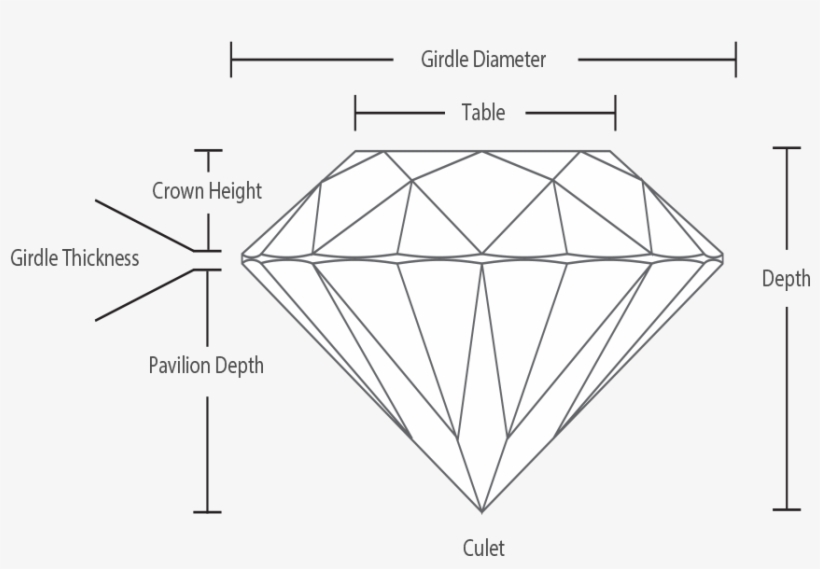When it comes to purchasing jewellery with diamonds, replacing missing diamonds in your jewellery, or purchasing a diamond for engagement purposes, it important to understand what you are purchasing.
At the Goldsmith, we know that one diamond is not like another, and we can help you to make the right decision with regards to your purchase. We can help you find that special diamond that you are looking for.
Here below, is a detailed explanation of 4 Cs of Diamonds.
The 4 Cs, when referring to diamond value, are colour, clarity, carat weight, and cut. All four factors are equally important in determining the final cost of a diamond. The criteria for diamond grading, most respected internationally, was developed by the Gemological Institute of America (the G.I.A.). The terminology and systems described on this page are those of the G.I.A.
Below is an explanation of these terms.
Colour
The colour of a diamond refers to the relative amount of yellow, brown or gray body colour that a stone possesses. The G.I.A. scale starts at “D” and goes through “Z”, with “D” being devoid of any body colour, and “Z” having a light yellow, brown or gray colour.

With actual stones, the colour difference looks like this:

Clarity
Practically all diamonds contain naturally occurring internal characteristics called inclusions. The size, nature, location and amount of inclusions determine a stone’s clarity grade and affect its cost. Clarity is determined using 10X magnification. By definition, if something is not visible at 10X, it does not impact the clarity.

Carat Weight
Carat is a unit of weight, not size. There are 5 carats in a gram. The weight of a diamond is measured in carats. A carat is divided into 100 parts, called points.
| 1 carat = 1.00 carat = 100 points |
| 1/2 carat = 0.50 carat = 50 points |
| 1/4 carat = 0.25 carat = 25 points |
Cut
At the turn of the last century, it was mathematically determined what the optimal proportions for various diamond cuts should be to assure maximum brilliance and dispersion.
Those proportions are:

| Shape | Depth % | Table % | Girdle | Culet | L to W Ratio |
|---|---|---|---|---|---|
| Round Brilliant Cut | 59 – 62.6% | 54 – 57% | Thin-Slightly Thick | None-Pointed | 1.0 – 1.03 |
| Princess Cut | 68 – 74% | 69 – 75% | Thin-Slightly Thick | None-Pointed | 1.0 – 1.04 |
| Cushion Cut | 61 – 68% | < 68% | Thin-Slightly Thick | None-Pointed | 1.0 – 1.08 (sq) 1.15 – 1.25 (rect) |
| Emerald Cut | 61 – 68% | 61 – 69% | Thin-Slightly Thick | None-Pointed | 1.30 – 1.45 |
| Asscher Cut | 61 – 68% | 61 – 69% | Thin-Slightly Thick | None-Pointed | 1.0 – 1.05 |
| Oval Cut | < 63% | 53 – 63% | Thin-Slightly Thick | None-Pointed | 1.30 – 1.50 |
| Pear Shape | < 68% | 53 – 65% | Thin-Slightly Thick | None-Pointed | 1.45 – 1.75 |
| Radiant Cut | < 67% | 61 – 69% | Thin-Slightly Thick | None-Pointed | 1.0 – 1.05 (sq) 1.20 – 1.50 (rect) |
| Heart Shape | 56 – 66% | 56 – 62% | Thin-Slightly Thick | None-Pointed | 1.0 (or as close as possible) |
| Marquise Cut | 58 – 62% | 53 – 63% | Thin-Slightly Thick | None-Pointed | 1.85 – 2.1 |
